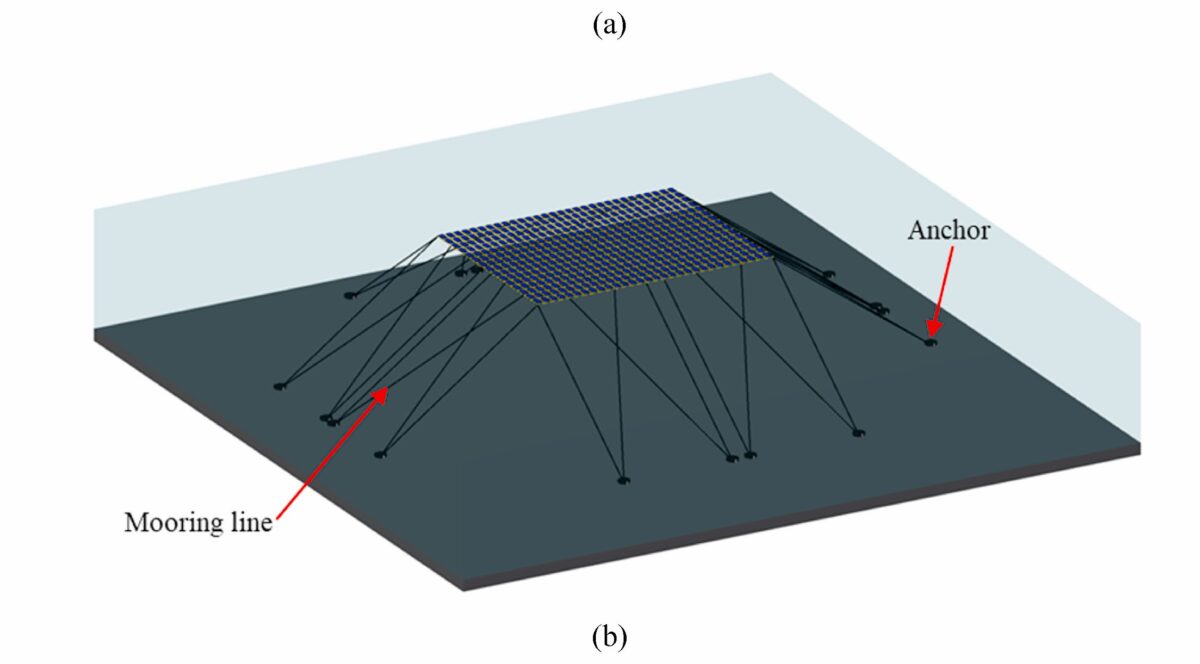An international research group has developed a new concept for floating photovoltaics that can purportedly withstand wave heights above 10 meters under harsh environmental offshore conditions.
The system includes a lattice-shaped floating PV array with four solar panels arranged in a dual-pitch configuration. This design reduces shading and wind loads while maintaining a streamlined profile, according to the scientists. The floaters are connected with a low-carbon mooring system using tethers that combine elastomeric elements and synthetic ropes. Splitters are employed to link one mooring tether to multiple floating modules, providing structural capacity and reducing the need for additional mooring lines.
“The floating PV arrays are electrically linked to each other via the floating linkage formed by the standard floats,” the researchers explained. “The generated power will be transmitted to a floating transformer stationed on the side for easy access via boats.”
The research group conducted tests on a scaled model of an array, featuring two orientations: 25 degrees and 0 degrees. The tests were carried out under regular and irregular wave conditions. The scientists said the array exhibited excellent motion performance, and noted that the 0-degree orientation outperformed the 25-degree orientation in terms of smaller extreme motion responses and lower mooring tensions. The system also did not show any contact between adjacent modules and was able to follow the waves with limited wave overtopping, according to the researchers.
Popular content
“We have estimated the cost of the concept and are optimistic that it is more cost-effective than many other offshore floating concepts,” researcher Zhiyu Jiang told pv magazine.
The scientists introduced the new floating PV tech in “Design and model test of a soft-connected lattice-structured floating solar photovoltaic concept for harsh offshore conditions,” which was recently published in Marine Structures. The team includes academics from Norway's University of Agder, the Oslo Metropolitan University, the Polytechnic University of Madrid, the Offshore and Marine (LOOM) Research Institute in the United Kingdom, and Norwegian engineering group cDynamics AS.
This content is protected by copyright and may not be reused. If you want to cooperate with us and would like to reuse some of our content, please contact: editors@pv-magazine.com.



By submitting this form you agree to pv magazine using your data for the purposes of publishing your comment.
Your personal data will only be disclosed or otherwise transmitted to third parties for the purposes of spam filtering or if this is necessary for technical maintenance of the website. Any other transfer to third parties will not take place unless this is justified on the basis of applicable data protection regulations or if pv magazine is legally obliged to do so.
You may revoke this consent at any time with effect for the future, in which case your personal data will be deleted immediately. Otherwise, your data will be deleted if pv magazine has processed your request or the purpose of data storage is fulfilled.
Further information on data privacy can be found in our Data Protection Policy.